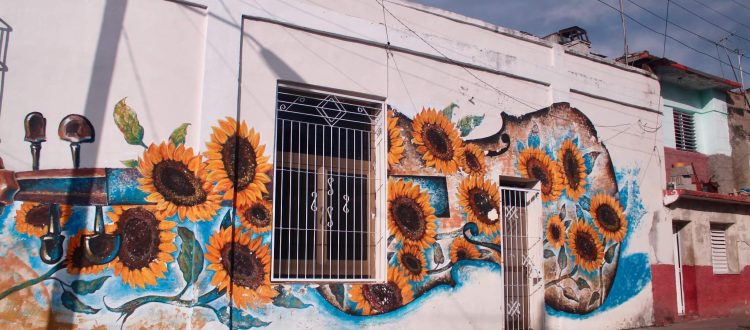My CIVITAS Cuba Experience
By Aminata Gueye '24, Lehman College, CUNY
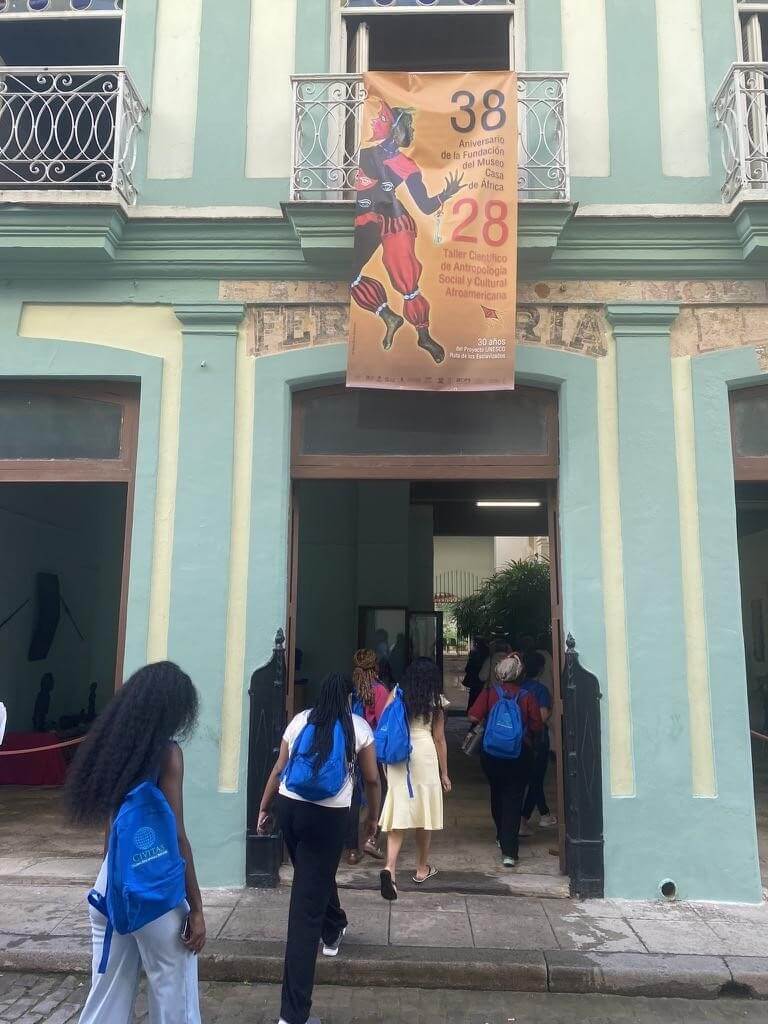
Walking into La Casa De África
Stepping out of the airport, the warm bright sunlight beaming and fans of green palm tree leaves swaying in front of me, I felt like I was back in Senegal. With my fellow Lehman peers and Professor Bertrade Banoum and Professor Betty Wanguri, we escaped the freezing cold of New York City on a research trip to Havana, Cuba.
Thanks to CIVITAS, we not only got to share our knowledge and research during the 28th Scientific Workshop of Afro-American Social and Cultural Anthropology conference, but we also got to learn so much about the incredibly rich and complex history of Cuba. In the 10 days of our trip, we also visited Matanzas, Cienfuegos, and Trinidad, experiencing new art, architecture and meeting locals along the way.
On our first day, we were treated to a fashion show and got to meet the designers. They shared their ethos, their vision for their brand and the ways they come up with their designs. The models descended the staircase gracefully, and showed off the dresses and outfits that represented Cuban and Afro-centric culture.
Stepping out of the airport, the warm bright sunlight beaming and fans of green palm tree leaves swaying in front of me, I felt like I was back in Senegal. With my fellow Lehman peers and Professor Bertrade Banoum and Professor Betty Wanguri, we escaped the freezing cold of New York City on a research trip to Havana, Cuba.
Thanks to CIVITAS, we not only got to share our knowledge and research during the 28th Scientific Workshop of Afro-American Social and Cultural Anthropology conference, but we also got to learn so much about the incredibly rich and complex history of Cuba.
In the 10 days of our trip, we also visited Matanzas, Cienfuegos, and Trinidad, experiencing new art, architecture and meeting locals along the way.
On our first day, we were treated to a fashion show and got to meet the designers. They shared their ethos, their vision for their brand and the ways they come up with their designs. The models descended the staircase gracefully, and showed off the dresses and outfits that represented Cuban and Afro-centric culture.
Being given the opportunity to present at Casa De Africa with brilliant, intelligent women like Professor Bertrade Banoum, Professor Betty Wambui, Nora Antwi, Sierra Lebron, Chanta Palmer, and Kilhah St. Fort, made me extremely proud. As a college student, this presentation experience allowed for cross cultural discussions and exchange of knowledge.

Professor Bertrade
Ngo- Ngijol Banoum
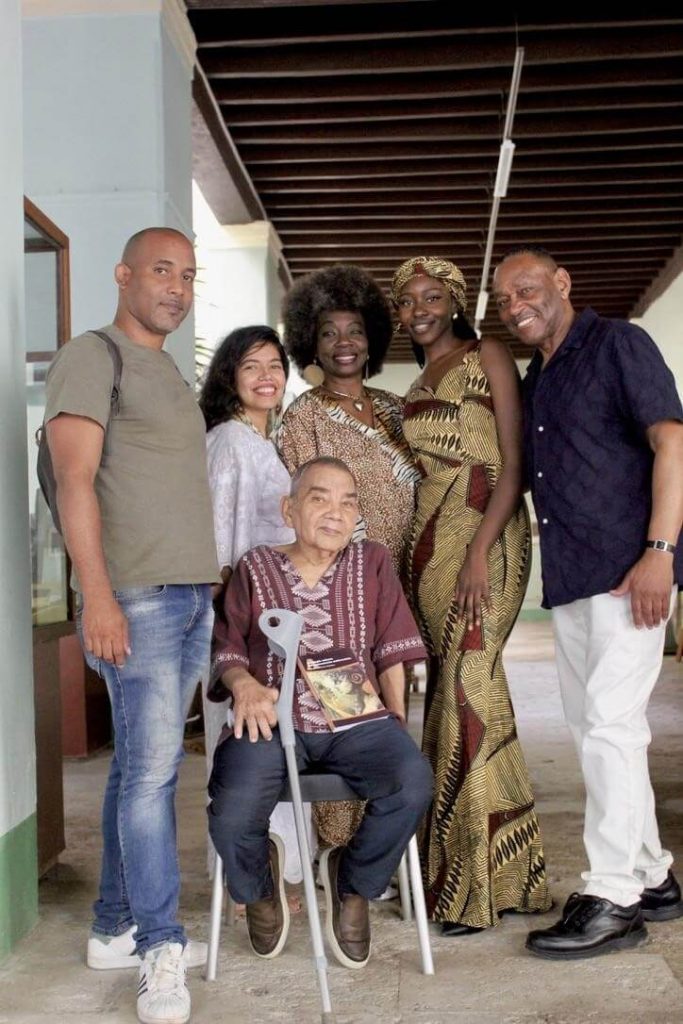
In La Casa De Africa meeting other attendees
The museum holds vibrant artwork from contemporary artists and historical artifacts from the times of enslavement and colonization in Cuba. Artwork, masks and statues, from throughout the African continent covered the walls and displayed throughout the halls. From each conference room to the next, we were surrounded by pieces of African culture.
I got to learn about programs established to diminish racial discrimination amongst young people in schools and the experiences of Afro-Cubans in the past and present. Professor Betty Wambui (SUNY Oneonta) gave a presentation that was particularly inspiring, reminding the African Diaspora to make concerted efforts to understand one another through breaking language barriers. It resonated with the philosophy of our trip and that of CIVITAS. That we can create cross cultural connections and reach out beyond our immediate circle for partnership and learning.
In Cienfuegos, we met with the Federation of Cuban Women. They explained their programs in which they empower older women to contribute to society and creatively express themselves. On the sidewalks, they sat in front of tables with handmade crafts and colorful clothing and jewelry. Once inside their headquarters, we had a discussion about the importance of encouraging young people, women and girls across all stages of life so that they know they’re valued and cared for.
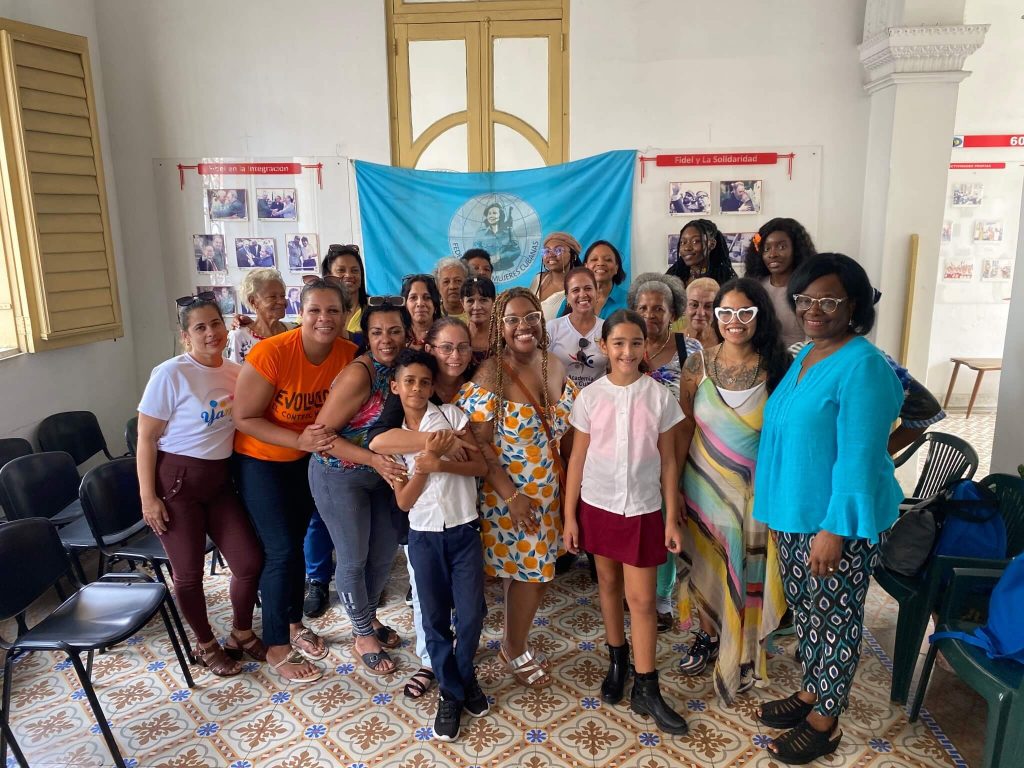
Federation of Cuban Women/ Federación de Mujeres Cubanas

Monument in Matanzas, Cuba
We were also brought to Trinidad, Cuba, which has an incredible amount of history related to the slavery and colonization period. The sugar mill plantations are a great stretch of land where enslaved Africans used to toil away strenuously. Being born and raised in New York, it was striking to be on the same fields where enslaved people worked where it looked as it did all those years ago. The plantations hold a sorrowful past. However, the people who work and live in the region today honor the ancestors who worked there through creativity and programs.
This was an experience I’m highly thankful for having. Thanks to our guides, the host families of our casa particulars, and the Cuban people we met along the trip are resilient, kind, warm, friendly, and extremely creative. Despite the challenges they may face, Along our journey, our guides Dairo, Yadira and Dayana educated us on the history and current events of the country. Everywhere we looked, there was a fascinating fact that they could give us and teach us something new.

Meeting with artist Emilio O’Farrill
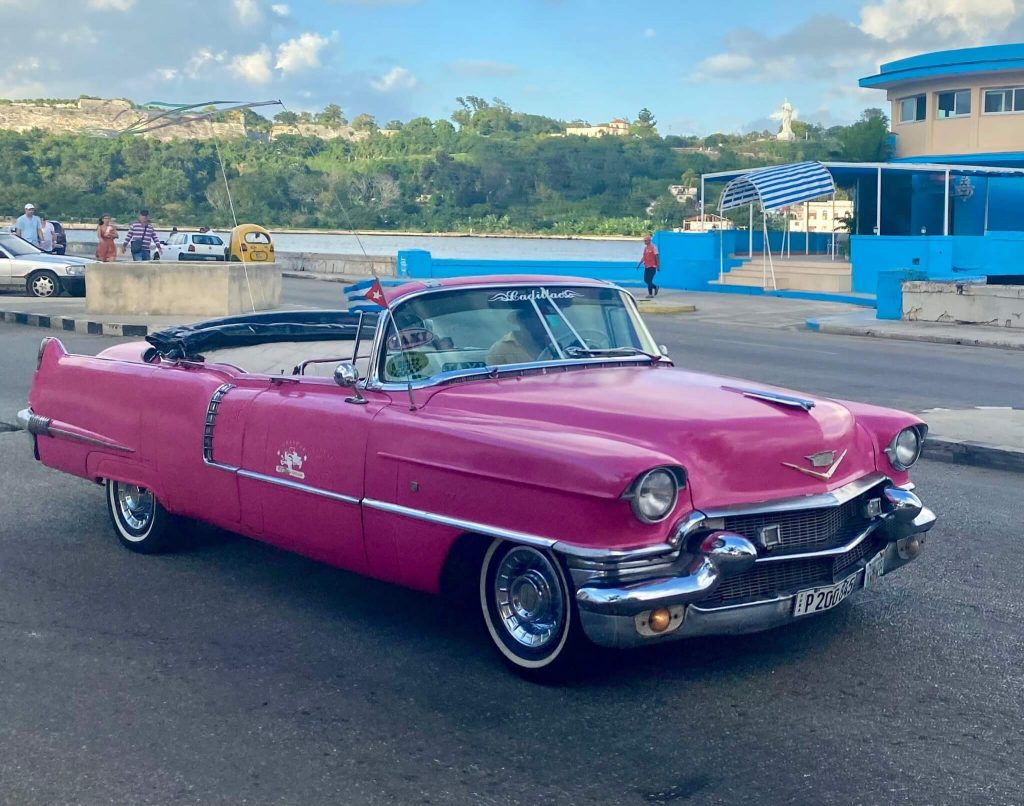
In Havana, Cuba
The familiarity initially felt stepping into the country was not limited to the similar climate to the country my family hails from. It comes down to the music, the friendliness of the people, the African spirituality/culture and so much more. It was a short trip (too short for my liking) but the amount there is to learn surpassed all expectations. What this experience with CIVITAS reminded me is that no matter how far apart we are in the Diaspora- an airplane, car ride, or boat trip away, the diaspora is still so connected. Despite the concerted efforts to rip us apart, the Afro-descendants of the Caribbean found ways to maintain language, dances, rhythm and indigenous knowledge from Africa. Around the globe, we can find one another and foster connections with people
We aren’t alone in the struggles we face. We have the opportunity to form bonds with others to get through the obstacles we believe are insurmountable.
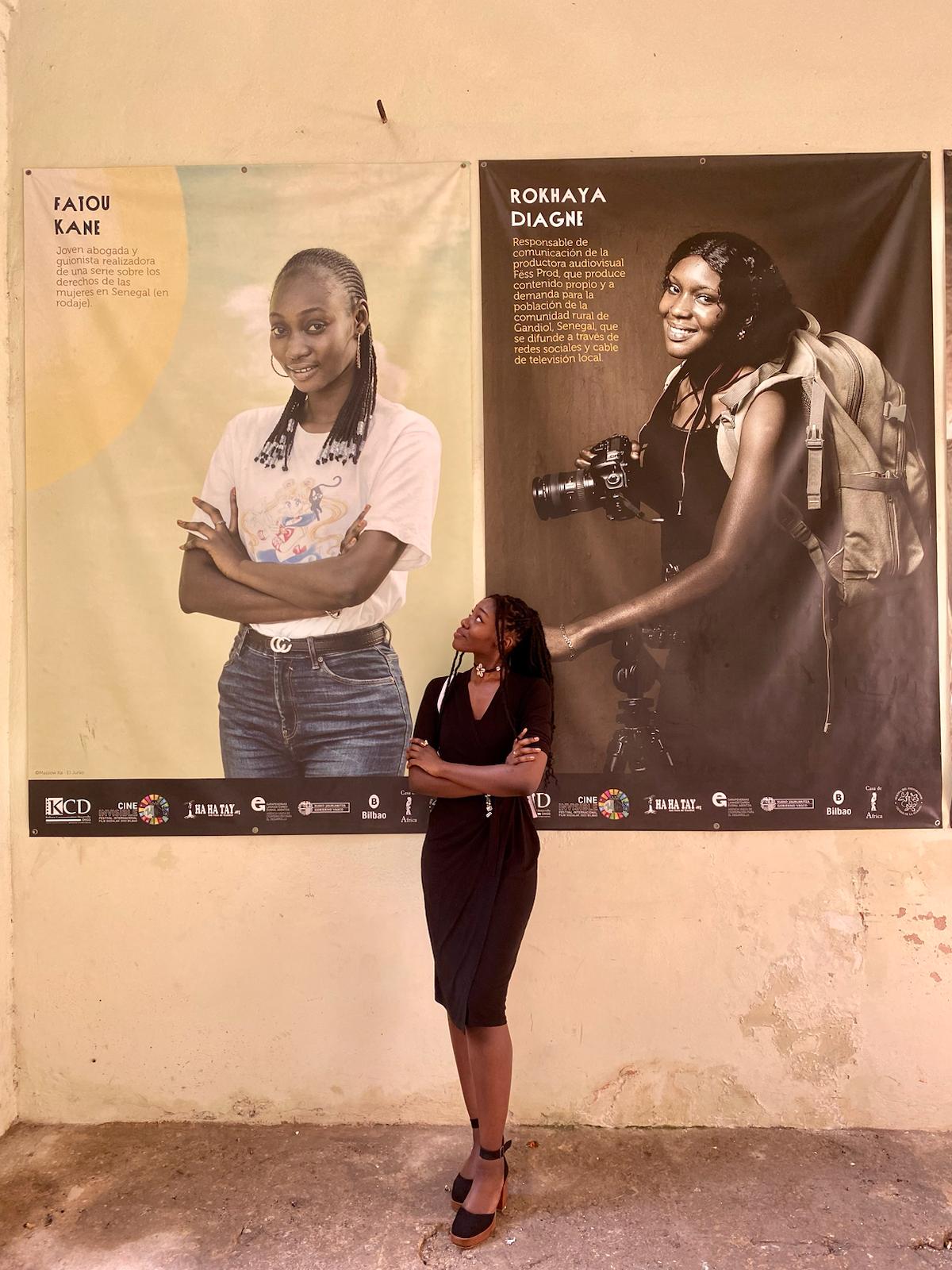
Aminata Gueye '24, Lehman College, CUNY
Aminata Gueye is a senior at Lehman College, City University of New York. She graduates this year with honors with a double major of Africana Studies and Journalism. After graduation, Ms. Gueye hopes to get her masters degree, research African history and work for publications with a focus on international relations.
In the 10 days of our trip, we also visited Matanzas, Cienfuegos, and Trinidad, experiencing new art, architecture and meeting locals along the way.
On our first day, we were treated to a fashion show and got to meet the designers. They shared their ethos, their vision for their brand and the ways they come up with their designs. The models descended the staircase gracefully, and showed off the dresses and outfits that represented Cuban and Afro-centric culture.

